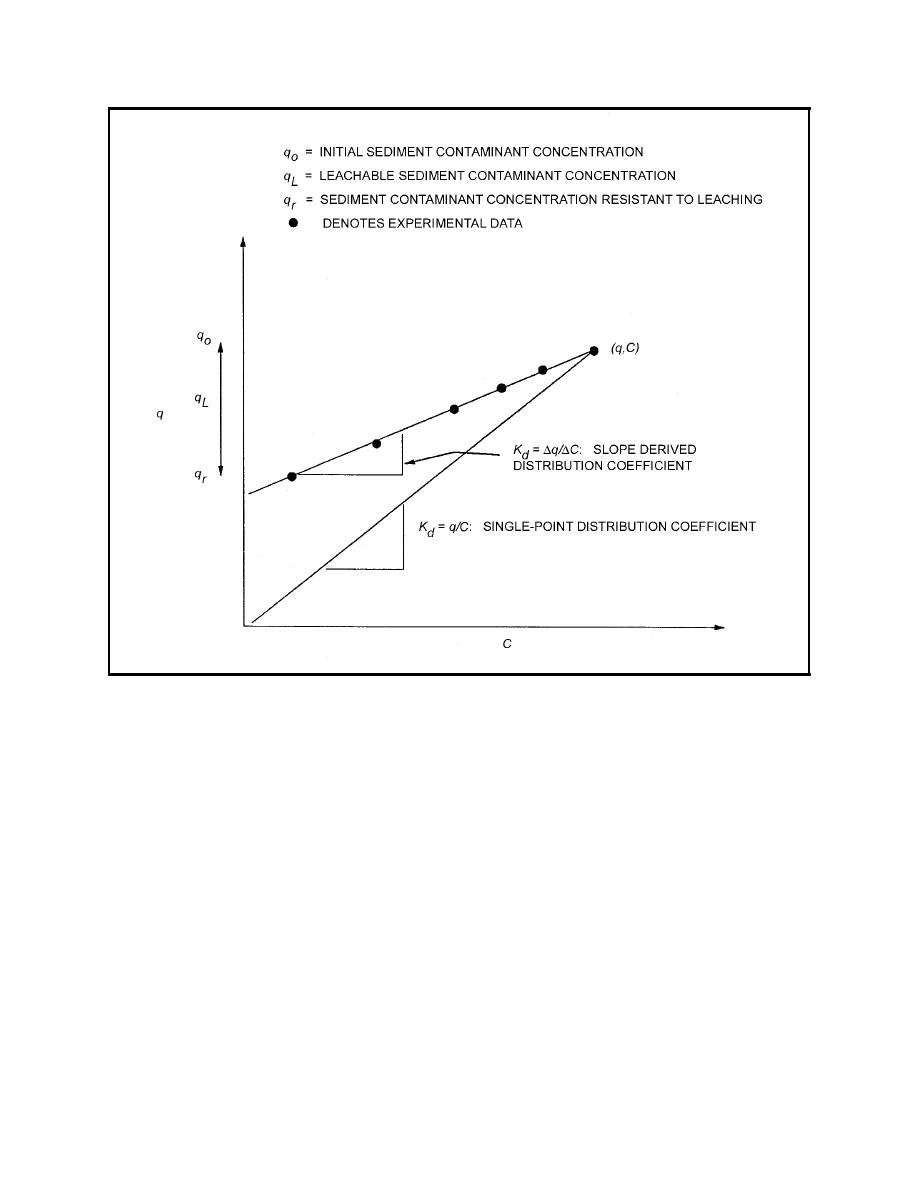 |
||
|
|
||
|
Page Title:
Figure 5. Desorption isotherms for slope-derived and single-point distribution coefficients, typical of freshwater sediments |
||
| |||||||||||||||
|
|
 ERDC TN-DOER-C16
July 2000
Figure 5. Desorption isotherms for slope-derived and single-point distribution coefficients, typical of
freshwater sediments
The general form of the q versus C relationship for classical desorption isotherms is as follows:
q = Kd + qr
(2)
where qr is the solid-phase contaminant concentration resistant to leaching, mg/kg.
Nonconstant distribution of contaminants between dredged material solids and water is commonly
observed during leaching of estuarine sediments (Brannon et al. 1989; Brannon, Myers, and Price
1990; Brannon et al. 1991). Nonconstant contaminant partitioning yields batch isotherms for which
the distribution coefficient changes as the solid-phase concentration q decreases during sequential
leaching, until a turning point is reached (Figure 6). At the turning point, the distribution coefficient
becomes constant and desorption begins to follow the classical isotherm. The nonconstant distri-
bution coefficient portion of the desorption isotherm is related to elution of salt.
8
|
|
Privacy Statement - Press Release - Copyright Information. - Contact Us - Support Integrated Publishing |